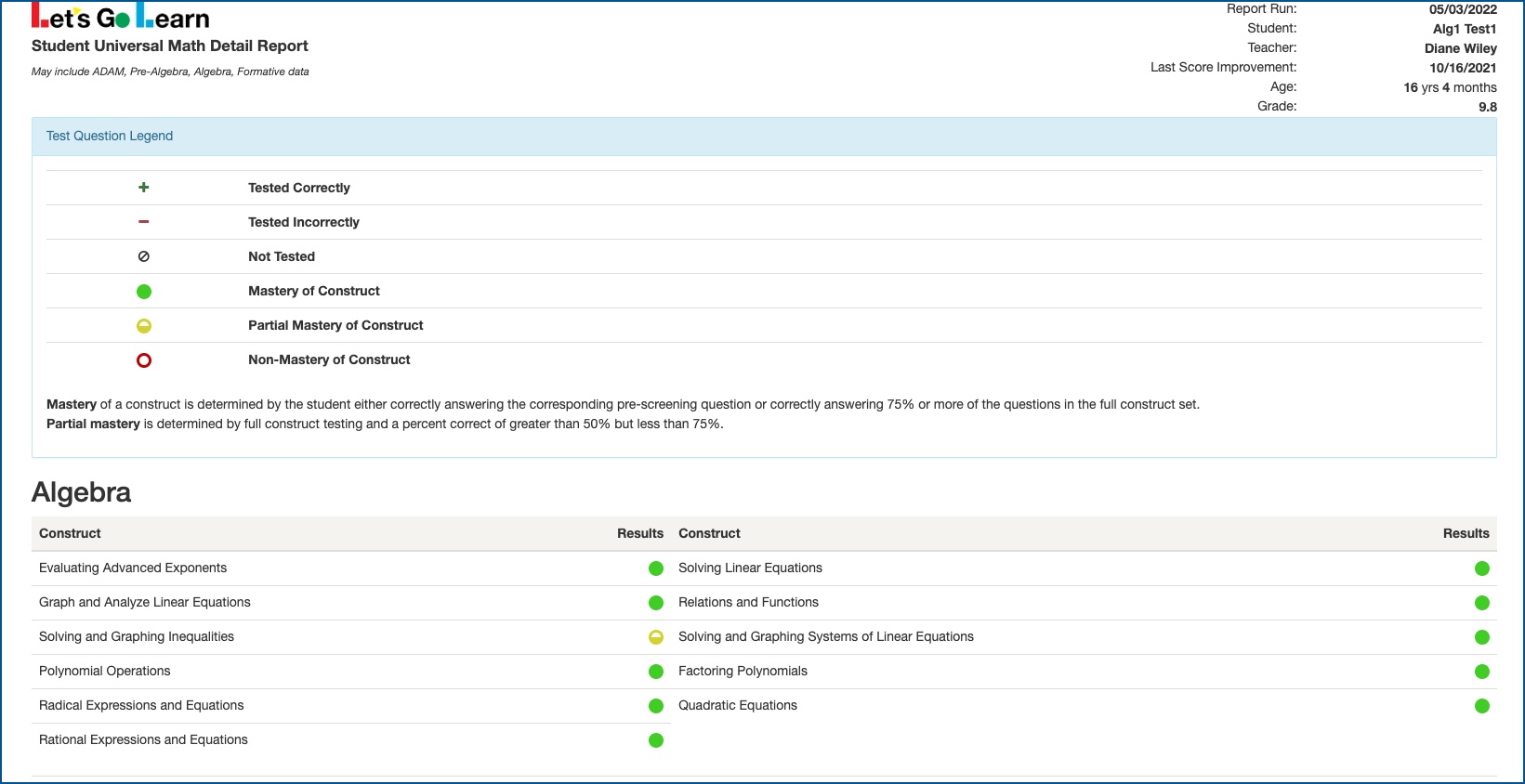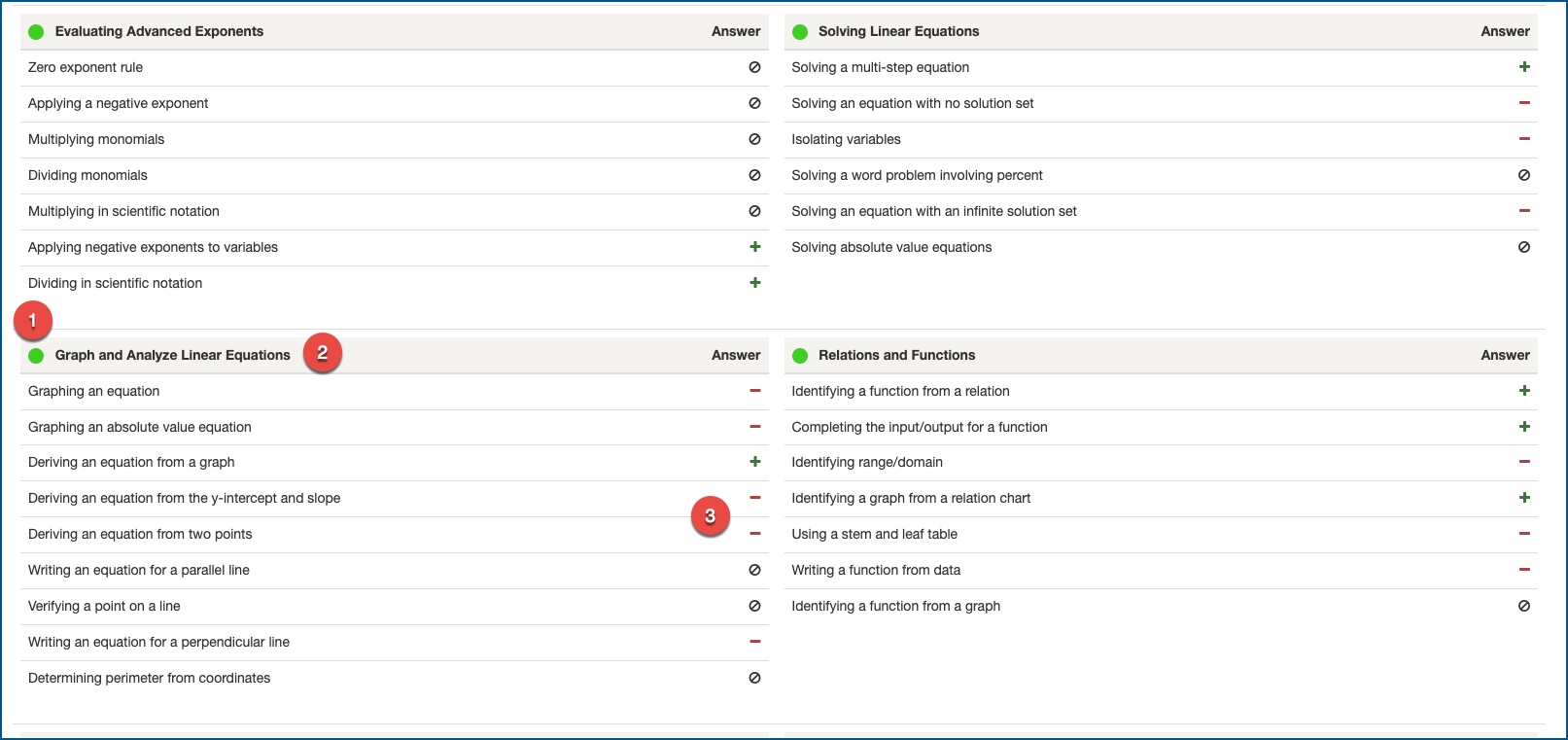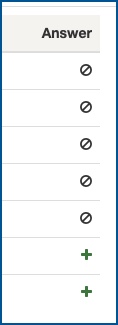Understanding the DOMA Algebra Assessment
The DOMA Algebra I assessment results are based on the student's performance during the pre-screening and assessment sections of the test.
DOMA Algebra I uses a 22-question Pre-Screening test in order to help reduce testing time and test fatigue. Each of the 11 constructs of DOMA Algebra I is represented by a pair of questions in the pre-screening. This pair reflects the most difficult questions within that construct. If the student correctly answers both of a pair of pre-screening questions, the corresponding construct is not tested in its entirety; instead it is assumed that the student has mastery of that construct. But if the student misses one or both of the pair, then the construct is tested completely. Because the DOMA Algebra I pre-screening is a multiple-choice test, it uses pairs of questions to increase its validity and reduce the possibility of a good-luck guess. The DOMA Algebra I report will note whether mastery is demonstrated by the pre-screening or through complete construct assessment.
DOMA Algebra I is comprised of 11 testing constructs that represent curriculum content usually covered during a complete Algebra I class. These constructs are listed below in the order in which they are organized in the assessment:
- Evaluating Advanced Exponents
- Solving Linear Equations
- Graphing and Analyzing Linear Equations
- Relations and Functions
- Solving and Graphing Inequalities
- Solving and Graphing Systems of Linear Equations
- Polynomial Equations
- Factoring Polynomials
- Radical Expressions and Equations
- Quadratic Equations
- Rational Expressions and Equations
How to Intepret the DOMA Algebra Detail Report
On the top right of the report, you will find the student information for the report.
- Report Run - The date you ran this report.
- Last Score Improvement - This refers to the date when the assessment was completed.
- Age & Grade - The age and grade of the student when the last DOMA Pre-Algebra assessment was completed.
Algebra Construct Results
These are the Active Pulse scores for each of the 11 constructs. Each construct is marked with either a green filled circle (indicating mastery), a yellow half-filled circle (indicating partial mastery), or a red empty circle (indicating non-mastery).

In the Construct Mastery Report, each of the 11 strands is broken down further into individual question subskills.
1. Each construct is marked with either a green filled circle (indicating mastery), a yellow half-filled circle (indicating partial mastery), or a red empty circle (indicating non-mastery). This is the Active Pulse score for the construct.
2. Each section is titled with the algebra construct name and below is the list of subskills.
3. Each construct is broken down into subskills. You read this section from top to bottom.
- Next to each question subskill, you will find one of three marks:
 : a slashed zero indicates that a particular subskill was not tested, either because the student correctly answered a pre-screening question for the construct in which it was located or because the student reached a ceiling of knowledge in that construct. If a student misses either four construct questions in a row or 50% or more of the construct questions, the testing of that subskill stops to reduce frustrating the student and causing test fatigue.
: a slashed zero indicates that a particular subskill was not tested, either because the student correctly answered a pre-screening question for the construct in which it was located or because the student reached a ceiling of knowledge in that construct. If a student misses either four construct questions in a row or 50% or more of the construct questions, the testing of that subskill stops to reduce frustrating the student and causing test fatigue.- ( + ) : A plus sign indicates that the individual question subskill was tested and the student answered correctly.
- ( - ) : A negative sign indicates that the individual question subskill was tested but the student answered incorrectly.

If a student masters a construct through pre-screening, it would look like the answers below. This student passed the two pre-screening questions that show a "+" in the last two subskills, so the construct is considered mastered and the student is not tested on the previous subskills.

See the attached file below for a cheatsheet on Interpreting DOMA Algebra report
For a list of algebra constructs and sub-tests - Click Here
Profile
Sign up now
Manage
Sign out



